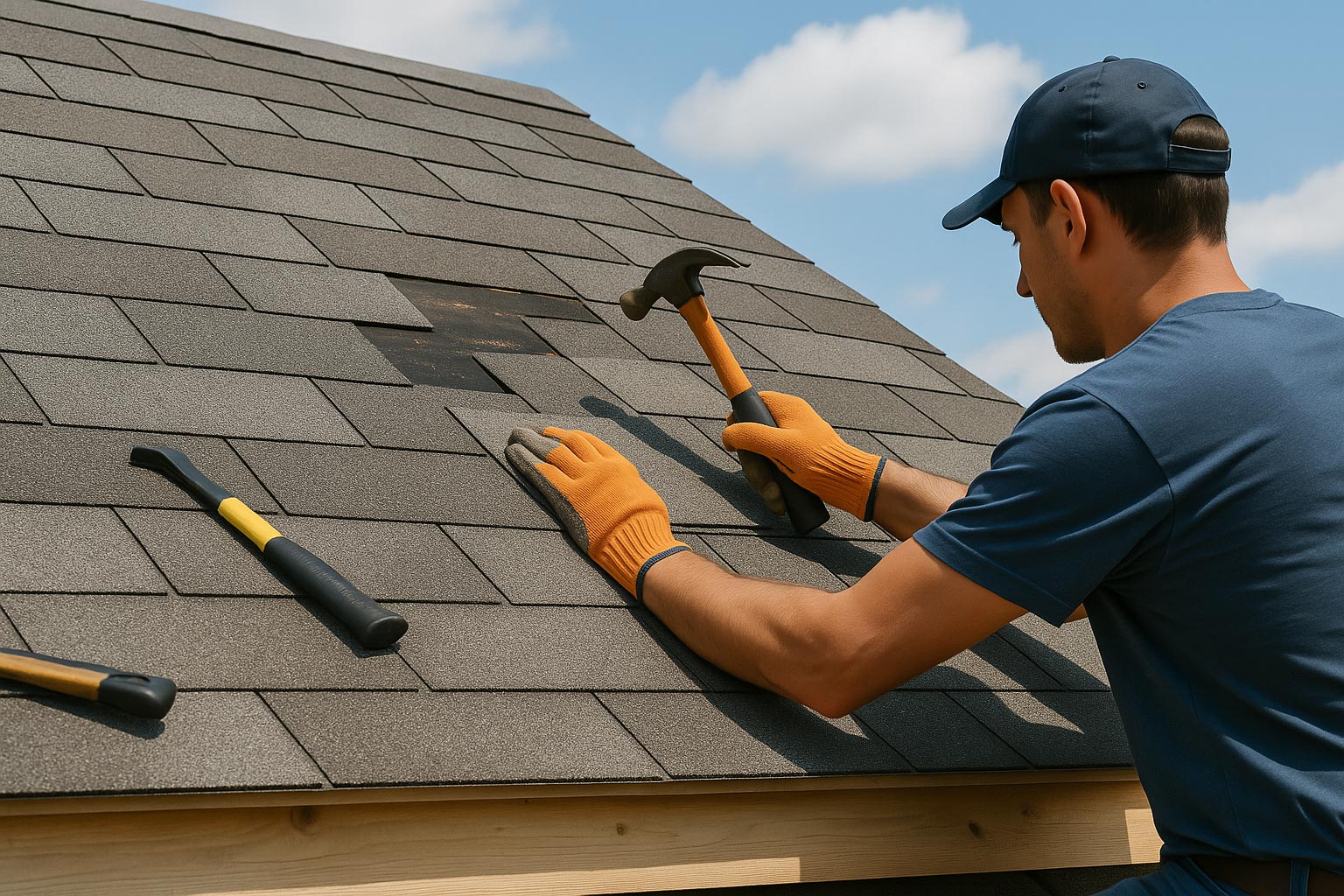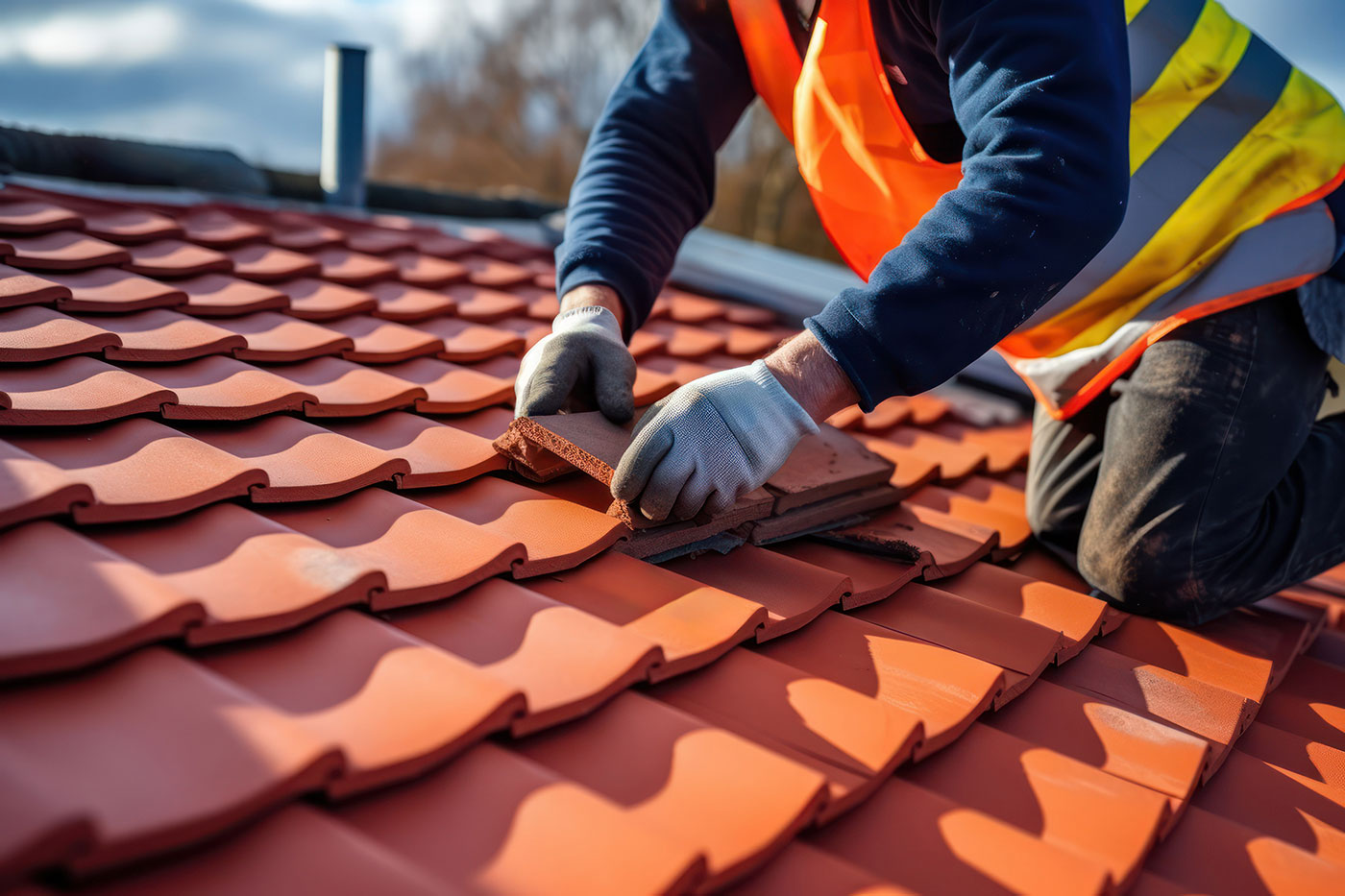Few things shape a property’s resilience quite like the condition of its roof. Those tiles, slates or sheets overhead are the first line of defence against British weather—relentless rain, gusts of wind, baking sun, and occasional snow. If the roof fails, the entire building suffers.
What is the true cost of ignoring small leaks or putting off tile replacements? How much peace of mind comes from knowing your home’s shelter is secure? Homeowners and landlords across the UK confront these questions every year, especially as storms become more frequent and materials age.
Let’s look at the most effective roof repair solutions and how they can add years to your home’s durability.
The Early Signs: Spotting Roof Issues Before They Worsen
Catching problems early makes a tremendous difference. Water stains on ceilings or walls are just the tip of the iceberg, often signalling trouble above that can escalate quickly.
Watch for:
- Tiles that are cracked, slipped, or missing
- Sagging spots along the roofline
- Moss, algae, or lichen buildups
- Debris in gutters (bits of tile, shingle, or granules)
- Damp smells in the loft
Ignoring these signs could lead to rot, mould, ruined insulation, or even structural damage. Consider that even a minor leak can, over time, result in thousands of pounds worth of repairs.
Practical Repair Solutions for Every Situation
Every roof is unique, whether it’s slate, clay, a flat surface, or covered in modern composites. Each type needs specific repair approaches.
Pitched Roof Repairs
- Replacing Broken Tiles: Lift old tiles and slot new ones in, ensuring they overlap correctly to prevent leaks.
- Re-pointing Ridge Tiles: Deterioration in mortar can allow water in; fresh pointing secures these ridges.
- Roof Valley Repairs: Removing debris and resealing flashed areas keeps water channelling where it should.
- Replacing Breathable Membranes: Under-tile breather membranes block moisture. If ripped or worn, swap promptly.
Flat Roof Repairs
Flat roofs typically face ponding water, a notorious culprit behind leaks in extensions and garages.
- Patching Felt or Membranes: Peel back the broken section, apply cold adhesive, and set a new patch.
- Liquid Waterproofing Solutions: Seamless polyurethane or acrylic coatings work well for temporary fixes.
- Resurfacing: Where aging is widespread, overlaying with new material extends the roof’s life.
- Insulation Upgrades: Older roofs with poor insulation foster condensation, which damages interiors.
Gutter and Chimney Fixes
- Clearing Blocked Gutters: Regular removal of moss, leaves, or debris prevents overflow and structural rot.
- Repointing Chimney Stacks: Intact mortar and secure flashing safeguard against leaks around chimneys.
These interventions may appear straightforward, but they demand precision and knowledge of materials. A small mistake—like using the wrong mortar mix or failing to seat a tile—can cause bigger problems later.

DIY vs Professional Repairs: What’s at Stake?
With a few tools and some basic safety knowledge, replacing a single broken tile or unblocking a gutter might be within reach for a competent homeowner. But when it comes to more complex structural or high-access tasks, calling a professional is a wise choice.
Consider the following:
- Safety: Roof repairs involve working at height, often on uneven or slippery surfaces.
- Quality of Materials: Using inferior products can undermine the whole repair.
- Regulations: Building control regulations affect certain roof works, particularly in conservation areas or on listed buildings.
- Insurance Cover: Botched DIY jobs might invalidate home insurance.
Seeking professionals for complicated jobs ensures work is up to standard and covered by warranties or guarantees. That peace of mind proves invaluable when winter storms put fixes to the test.
Roof Repair Costs: Smart Spending or Expensive Mistakes?
Budget is naturally a concern. Spending £300 to replace slipped tiles could save thousands in future repairs due to water ingress.
Here’s a broad overview of typical repair costs in the UK (2024 figures):
Repair Type | Estimated Cost | Typical Timescale |
|---|---|---|
Replace 10 roof tiles | £150 – £350 | 1/2 day |
Flat roof leak repair | £150 – £400 | 1 day |
New lead flashing | £250 – £500 | 1 – 2 days |
Repointing ridge tiles | £350 – £750 | 1 – 2 days |
Full roof replacement* | £4,500 – £7,000 | 1 – 3 weeks |
*Costs vary by region and roof size.
Think about value, not just outlay. Putting repairs off almost always leads to bigger bills. According to the Federation of Master Builders, swift, small repairs have a return that far outweighs neglect.
When is Full Roof Replacement the Sensible Option?
Some roofs reach a point where ‘patching up’ simply extends the inevitable. How do you know when to stop repairing and start planning a full roof replacement?
Consider:
- Over 25% of tiles or slates are damaged or missing
- Frequent leaks after heavy rain
- Significant sagging or visible dips in the structure
- Widespread deterioration of the underlay or battens
There’s also a cost calculation at play: repetitive call-outs to fix new problems often add up to more than replacing the entire roof.
Modern materials come with impressive guarantees, some lasting 20–50 years. You may find it’s a smarter investment to renew in one go than chase endless patch jobs.
Prolonging Roof Longevity: Small Steps That Make a Difference
It’s not only about fixing problems but stopping them from happening in the first place. Preventative measures are both simple and highly effective.
- Regular Inspections: Twice yearly checks spot broken slates, slipped tiles, and blocked gutters before issues escalate.
- Clean Gutters and Valleys: Clear paths channel water away efficiently and prevent overflow.
- Trim Overhanging Branches: Reduce the risk of debris fall or storm damage.
- Install Eave Guards or Gutter Guards: Limit blockage from leaves and moss.
- Prompt Repairs: Tackling issues immediately stops water from spreading.
Many local councils or roofing organisations offer recommended maintenance guides. Following these could help maintain insurance cover and safeguard your home’s integrity.
The Impact of Weather Trends: Are Roofs Under Growing Pressure?
British roofs face more varied pressures than ever; climate experts have highlighted:
- Increases in powerful storms, resulting in higher instances of wind damage
- Prolonged wet spells, accelerating tile or slate deterioration
- Sudden temperature fluctuations stressing roof structures
Emergency call-outs after storms hit record highs in 2023 across several regions. That’s not just anecdotal: industry data reveal a 22% spike in insurance claims relating to roof damage over the last three years.
Weatherproofing is no longer ‘just in case’—it’s necessary protection.
Roofing Materials: Are New Innovations Worth it?
Homeowners now have choices that weren’t available a decade ago.
- Composite Tiles: Mimic traditional slates and tiles but last longer and weigh less.
- Solar Tiles: Generate electricity while protecting against the elements.
- Self-Healing Membranes: Close small cracks automatically, reducing the likelihood of minor leaks developing into something serious.
- Recycled Materials: Some modern products use up to 90% recycled content, appealing for sustainability-minded owners.
Costs tend to be higher for the latest options, but their durability, energy savings, and environmental benefits are winning more fans.
Confidence in a Watertight Home
The roof’s condition dictates so much about a house’s comfort, safety, and value. Repair might mean a single new tile, or a full overhaul using the latest technologies. In every case, there’s reassurance in knowing the building has solid shelter above.
Homeowners who invest in proactive repairs and upgrades don’t just safeguard against weather and time—they often find it easier to sell or insure their properties. Quality roof repairs aren’t just a cost. They’re a safeguard, adding tangible value and years of security for all who live beneath.







